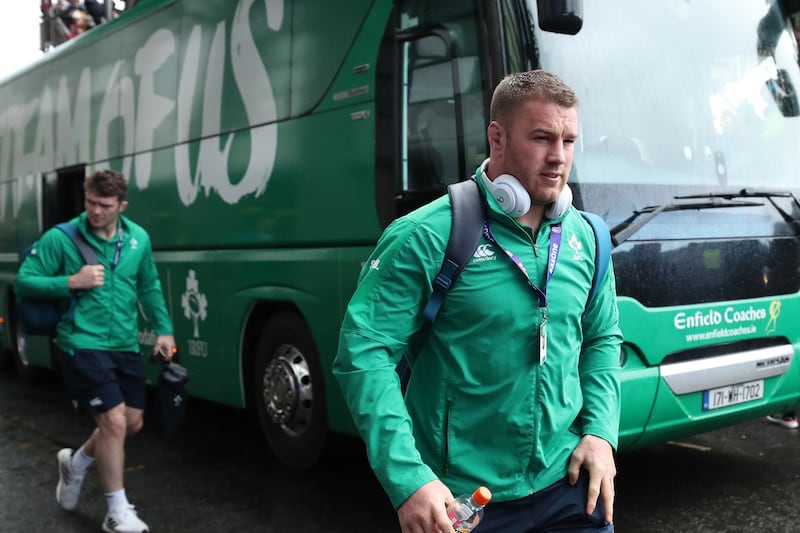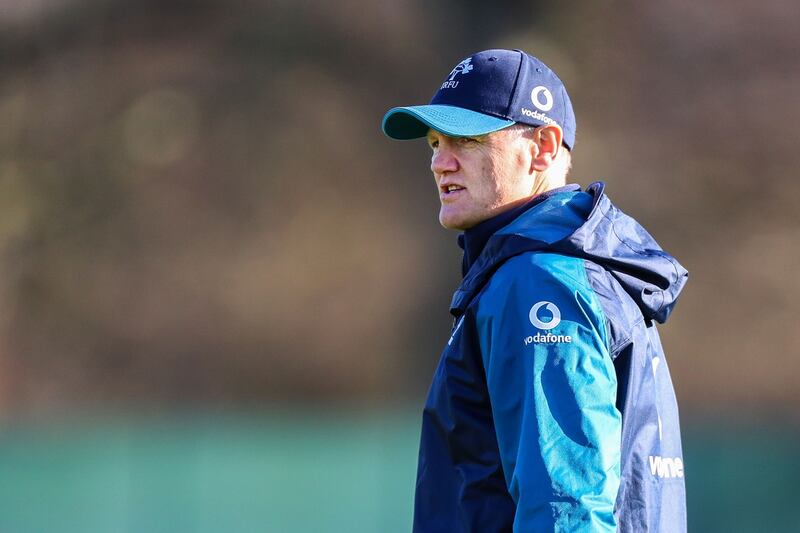Every once in a while an international rugby tournament will unearth a new tactic, or at any rate, a rehashing of an old one. Think back to the 2007 World Cup and how Juan-Martin Hernandez and Los Pumas revived the up-and-under (along with the drop goal) and made it the fashion statement of the competition.
Now, thanks in the main to a rejuvenated England, the chip or grubber in behind the opposition defence – hitherto primarily a tactic employed to such saturation levels only on sodden days – has become de rigeur and decidedly profitable in this year's Six Nations.
England kicked the leather off the ball against France at Twickenham on Sunday, but inventively and creatively. In what was clearly a pre-ordained tactic, it started with Elliot Daly countering, breaking and kicking into space for the first of Jonny May's hat-trick barely a minute into the game.
It continued with Chris Ashton's chip into space for May's third touchdown, Henry Slade's grubber which led to the penalty try conceded by Gael Fickou for tackling Ashton without the ball and Owen Farrell winning the touchdown from his own kick ahead.
Empty spaces
Furthermore, Ben Youngs’ grubber up the middle exposed yet more swathes of empty spaces in the French backfield for Ashton to latch onto the ball. One ruck and one pass later Slade scored. Even May’s second emanated from a lineout which was the result of Farrell’s up-and-under targeting Morgan Parra by the touchline.
It helps, of course, when France pick a winger at fullback and two centres on the wing; none of whom exactly impressed with their work rate in the backfield. Then again, do France actually have a selection strategy per se?
In seemingly overreacting to the opening defeat against Wales, since leading that game 16-0 at half-time Les Bleus have been outscored by 68-11 in their last game and a half. Scotland will fancy their chances.
Rewind to the weekend before when England’s kicking game found so much grass in the Irish backfield and two of their four tries were scored off kicks in behind.
Hence, six of England’s 10 tries to date in two matches have come directly from kicks, and in effect seven of them have. With their array of right- and left-footers, six different players have provided those try-scoring assists. Also, they are not afraid to use the tactic immediately off a turnover or after making a break, when the inclination of most teams would be to keep the ball in hand.
To put England’s approach further into context, they kicked the ball out of hand 49 times against France, more than twice the tally for both Scotland (24) and Ireland (21). This is ironic when you consider Eddie Jones’ barb two seasons ago forecasting that Ireland would play “kick and clap rugby”, even though England kicked the ball out of hand more back then.
Chasing channel
Time was when Ireland were considered the masters of the kicking game, and especially contestable kick chases. Not any more, or at any rate, not so far in this Six Nations.
Whether entirely intentional or not due to Scotland emulating England in flooding the chasing channel of Conor Murray's 13 kicks out of hand, only three could be considered contestable. None were reclaimed. Two of his longer kicks ended up back with Ireland, one from a Blair Kinghorn knock-on and, after Joey Carbery's follow up tackle and Ultan Dillane's jackal, when James Ritchie was pinged for side entry.
By contrast, four of Greig Laidlaw’s five box kicks were contestable, and three were reclaimed. Finn Russell also had a variety of high kicks and wicked grubbers which Ireland dealt with well, and akin to England, Scotland looked to manoeuvre Ireland’s defence before putting the ball into the resulting space through a variety of sources.
Ireland don't really do this as much, perhaps because they don't have the same array of kickers, save for the notable exception of Jacob Stockdale, whose end-over-end kick in behind – as against England in Twickenham and the All Blacks last November – yielded the first try for Murray. Chris Farrell's grubber from Johnny Sexton's offload also yielded an attacking lineout, whereas Peter O'Mahony's drifted over the left touchline but at least forced Scotland into their own 22.
But here's an eye-catching stat from Saturday's game. Not only did Murray kick more out of hand (13 times) than Sexton or Carbery, so did Rob Kearney (three) and, eh, O'Mahony (two) have as many as Carbery.
Kicking long
Sexton's only kick was an overcooked up-and-under which Stuart Hogg caught without pressure. Carbery had two, once kicking the ball dead with the last play of the first half and later when grubber-kicking into touch with a penalty advantage.
Ireland twice ran scrum ball in their own half after getting back to 13-17 against England rather than opt for kicking long. On the hour against Scotland, just after going two scores clear through Keith Earls’ try, and even though both Scottish wingers were pushed up and there was space at the back to kick long, Ireland again ran the ball.
It was a curious ploy, made more questionable when Farrell was tackled on the Irish 22 and Ritchie poached a clean turnover, in turn leading to the harsh penalty against Bundee Aki in the jackal from which Laidlaw made it 19-13.
This reduced Ireland’s scope to push on for a fourth try. Granted, Ireland’s decision to run scrum ball in their own half about six minutes beforehand had led to the breaks by Kearney and then Carbery in the build-up to Earls’ try.
However, one ventures that the Irish forwards, after going two scores ahead and with a quarter of the game remaining, wouldn’t have minded standing up from that 60th minute scrum to see the ball downfield in Scottish territory.
Last Saturday at Murrayfield remains a good, sleeves-rolled-up win. But there’s a time and a place for kicking too, and it’s seriously back in vogue.















